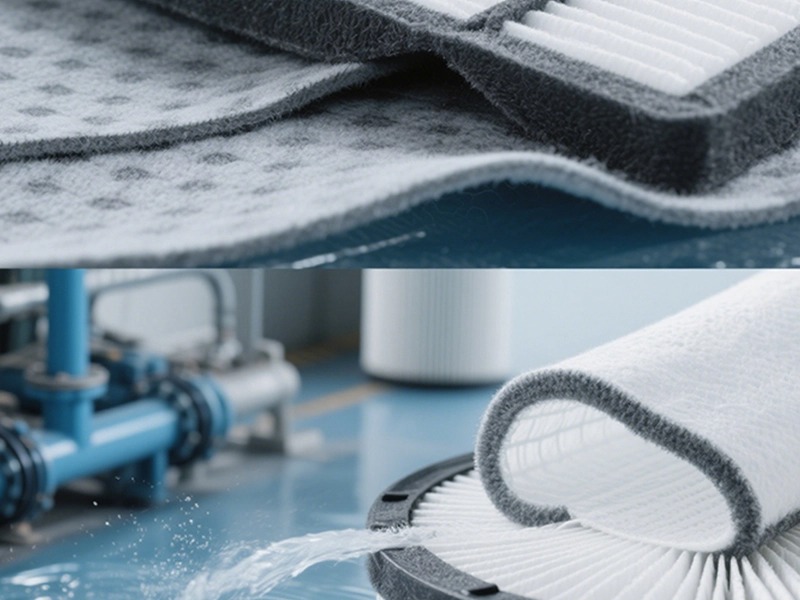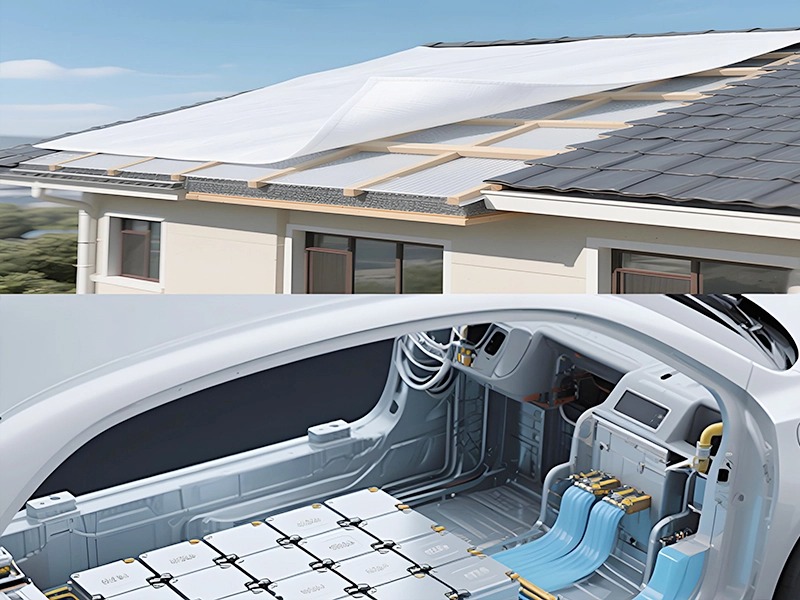- All
- Product Name
- Product Keyword
- Product Model
- Product Summary
- Product Description
- Multi Field Search

Views: 149 Author: Site Editor Publish Time: 2025-08-02 Origin: Site
Coarse filament non-woven fabric, also known as coarse denier non-woven fabric, is gaining attention for its durability, strength, and multi-purpose application across several industrial sectors. With sustainability becoming an essential goal for businesses and consumers alike, one pressing question surfaces: Can coarse filament non-woven fabric be reused? The short answer is yes, but the broader reality involves understanding how, when, and where such reuse is viable and beneficial.
This article delves deep into the reusability of coarse filament non-woven fabric, considering its material properties, typical applications, and environmental footprint, while providing practical insights for decision-makers across construction, filtration, and interior design industries.
Coarse filament non-woven fabric is a synthetic textile material made from thermally bonded polyester or polypropylene fibers with a relatively large denier—typically ranging from 4D to 8D or more. The term “coarse filament” refers to the thicker fiber diameters that contribute to its rigid structure, high tensile strength, and enhanced durability.
Unlike traditional woven fabrics, this type of material doesn’t rely on weaving or knitting. Instead, it is produced through spunbond or needle-punched processes, resulting in a dense, stiff sheet with excellent mechanical strength.
Key physical characteristics include:
High stiffness and dimensional stability
Excellent breathability and permeability
UV and moisture resistance
Superior tensile and tear resistance
Thermal and acoustic insulation capabilities
These properties make it highly suitable for demanding applications in building materials, filtration systems, and interior decorations.

While coarse filament non-woven fabric can certainly be reused, its reusability depends on multiple variables, including its original application, the level of exposure to contaminants, physical integrity after use, and end-user cleaning or refurbishing capabilities.
Here’s a breakdown of scenarios where reusability is both possible and practical:
| Application | Typical Lifespan | Reusability Potential | Common Reuse Methods |
|---|---|---|---|
| Building Material | 3–10 years | High | Re-laying insulation, acoustic panels |
| Filter Material | 3–12 months | Moderate to Low | In pre-filtration or less critical environments |
| Decorative Materials | 1–5 years | High | Used again for panel backing, wall linings |
If handled and maintained correctly, these fabrics can undergo multiple life cycles. However, post-use condition assessment is vital. In general:
Contaminated filter media may not be suitable for reuse in critical air or water filtration systems.
Building insulation layers that have not degraded physically or chemically can be reapplied.
Decorative panels often enjoy a second life with simple dusting and reshaping.
Coarse filament non-woven fabric finds a strong foothold in construction, especially as thermal insulation, moisture barriers, soundproofing panels, and underlayment layers. These functions require robust, long-lasting materials—and coarse filament non-woven fabric delivers just that.
Dimensional Stability: Once installed as insulation or subfloor barrier, the material retains its form.
Resistance to Moisture and UV: It resists common forms of degradation.
Ease of Removal: Modular or panel-based installations allow for easy extraction and reinstallation.
During building renovations or repurposing, these materials can be salvaged and reinstalled in new zones or even different buildings. For example, wall soundproofing layers made of coarse non-woven fabric can be removed intact and reused in a studio or garage environment.
Pro Tip: Always inspect reused sheets for microbial growth, especially if exposed to humid environments.
Filters—particularly air and industrial dust filters—are among the most common applications of coarse denier non-woven fabric. Its structure allows for efficient particle entrapment while maintaining adequate airflow.
The answer is yes, but with caution. Filter reuse depends on several factors:
Degree of Contamination: Heavily soiled or oil-soaked filters should not be reused.
Filter Position: Pre-filters in HVAC systems can sometimes be vacuum-cleaned and reused.
Application Criticality: In medical or food-processing environments, reusability is discouraged due to hygiene standards.
Some filters designed using coarse filament non-woven fabric are explicitly made for light-duty pre-filtration and can withstand gentle washing or blow-cleaning before reapplication. However, each reuse must follow strict inspection protocols to avoid efficiency loss or air leakage.
Coarse filament non-woven fabric is widely used in panel backings, wall linings, ceiling coverings, and even exhibition booth designs. These applications are non-load-bearing, making them perfect candidates for reuse.
Because decorative environments rarely involve harsh conditions, non-woven fabrics used here can:
Be removed and cleaned easily
Undergo simple trimming or reshaping
Serve as secondary design elements like acoustic panels or temporary visual partitions
This reuse not only extends the lifecycle of the material but also reduces material costs and waste, especially in event management and temporary installations.
Reusability aligns perfectly with the global drive toward sustainable production and consumption. By reusing these fabrics:
Landfill waste is significantly reduced
Less energy is consumed in re-manufacturing
Supply chains become more circular and efficient
Manufacturers and users alike are beginning to adopt closed-loop systems where coarse filament non-woven fabrics are recollected, sanitized, and repurposed into secondary products like landscaping liners or reusable insulation mats.

Before deciding on reuse, follow this step-by-step assessment guide:
Check for:
Tears or punctures
Mold or mildew
Warping or structural deformations
A strong chemical or musty smell may indicate contamination or degradation.
Flex and bend the fabric. If it snaps, cracks, or loses elasticity, avoid reuse.
Try cleaning a sample portion to check if residues are removable without damaging the fabric.
Ensure no thinning or density loss has occurred, especially in filtration applications.
| Question | Answer |
|---|---|
| Is coarse filament non-woven fabric waterproof? | Yes, especially when treated or laminated. Great for moisture barriers. |
| Can I wash coarse filament fabric? | Only if the application allows and the structure remains stable post-wash. |
| Does it degrade in UV light? | No, it has excellent UV resistance. |
| Can it be recycled? | It can be downcycled or repurposed but may not fit curbside recycling bins. |
| Is it biodegradable? | No, it's synthetic (usually polyester or polypropylene) and not biodegradable. |
| Is it suitable for long-term indoor use? | Yes, especially in dry, low-traffic environments like ceilings and walls. |
Absolutely—coarse filament non-woven fabric is one of the more reusable industrial textiles available today. With proper care and thoughtful application, it can be extracted, repurposed, or upcycled into equally valuable or even superior uses. From retaining insulation properties in new buildings to serving again as interior design elements, this versatile fabric offers excellent returns on material investment.
As businesses seek to reduce environmental impact and operational costs, recognizing and implementing the reuse potential of coarse filament non-woven fabric becomes not just a sustainable choice—but a strategic one.